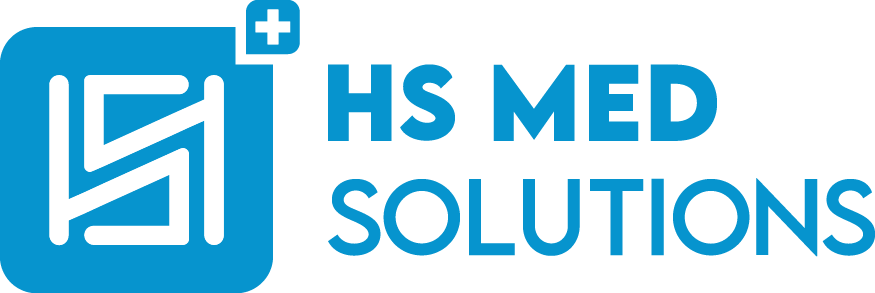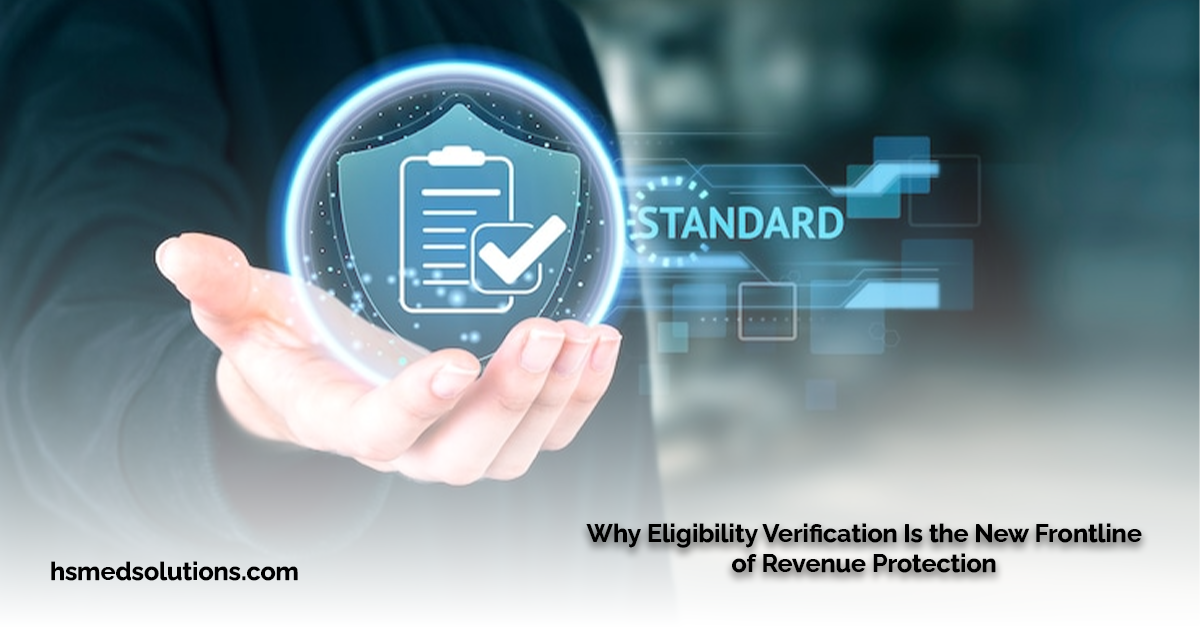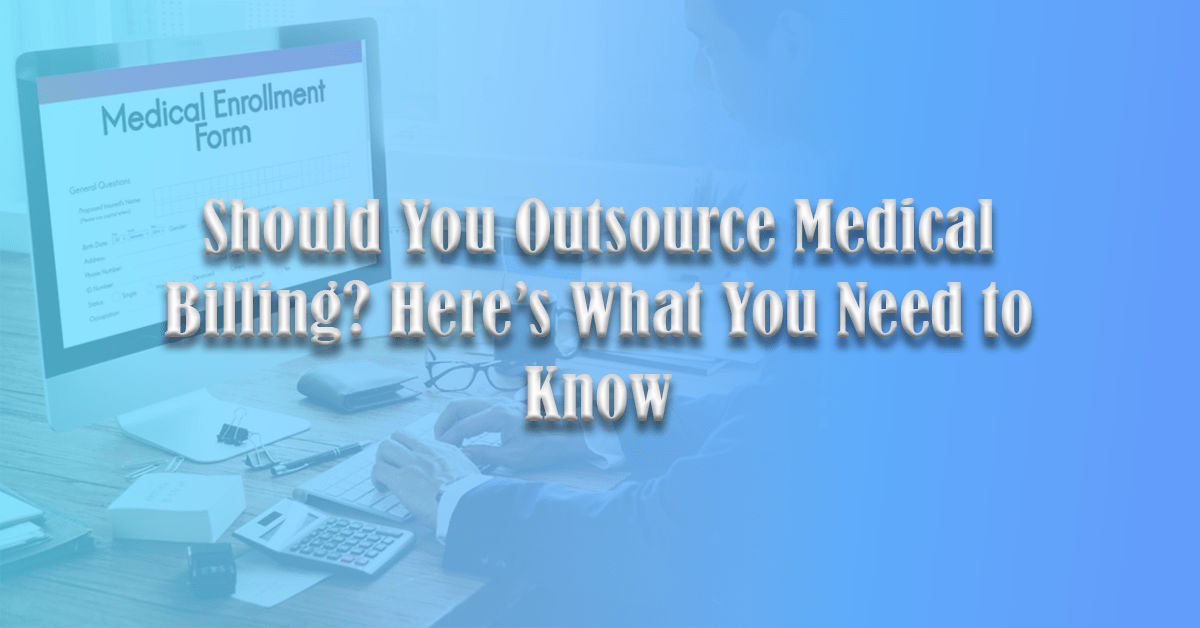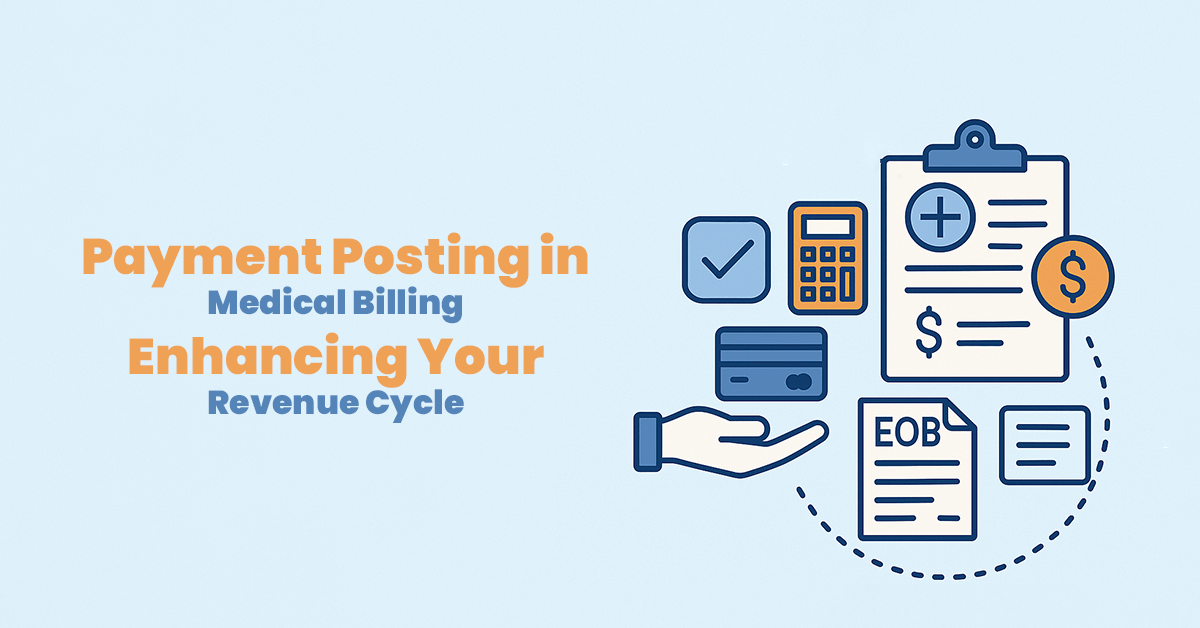Medical Billing Software Comparison
In the fast-paced world of healthcare, efficiency and accuracy are paramount. Medical billing software plays a crucial role in streamlining revenue cycle management for healthcare providers, ensuring that claims processing, compliance, and financial performance are optimized. In this comprehensive guide, we delve into the realm of medical billing software, exploring its types, key features, benefits, and the essential factors to consider when choosing the right solution for your practice.
Introduction to Medical Billing Software
Medical billing software is a digital solution designed to automate and manage the billing process in healthcare facilities. It integrates seamlessly with practice management systems and electronic health records (EHR), offering a centralized platform for billing, coding, claims processing, and revenue cycle management.
Types of Medical Billing Software
There are several types of medical billing software available, catering to the diverse needs of healthcare providers. Some common types include:
1 - Stand-Alone Billing Software:
Focus:
These solutions are designed specifically for billing and claims processing.
Suitability:
Ideal for small to mid-sized practices that primarily require billing functionality without extensive practice management features.
Features:
Stand-alone billing software typically includes claim generation, submission, and tracking, as well as coding assistance and basic reporting capabilities.
Benefits:
Simplifies billing processes, reduces errors, and streamlines reimbursement workflows.
2 - Integrated Practice Management Systems (PMS):
Focus:
PMS platforms encompass a broader range of functionalities beyond billing, including scheduling, patient management, and reporting.
Suitability:
Suitable for practices looking for a comprehensive solution that integrates billing with other practice management tasks.
Features:
In addition to billing features, PMS software offers appointment scheduling, patient demographics management, revenue cycle analytics, and financial reporting.
Benefits:
Centralizes practice operations, improves workflow efficiency, enhances patient experience, and provides holistic insights into practice performance.
3 - EHR-Integrated Billing Software:
Focus:
These solutions combine electronic health record (EHR) capabilities with billing functionalities.
Suitability:
Ideal for practices seeking seamless integration between clinical data and billing processes, eliminating duplicate data entry and improving accuracy.
Features:
EHR-integrated billing software includes EHR functionality such as patient charting, clinical documentation, e-prescribing, alongside billing features like claim submission, coding assistance, and revenue cycle management.
Benefits:
Streamlines clinical and administrative workflows, improves care coordination, enhances billing accuracy, and supports meaningful use of EHR technology.
4 - Cloud-Based Billing Software:
Focus:
Cloud-based solutions host billing software on remote servers accessible via the internet, offering flexibility and scalability.
Suitability:
Suitable for practices of all sizes looking for a cost-effective, scalable, and accessible billing solution.
Features:
Cloud-based billing software provides remote access, automatic updates, data backup, and integration with other cloud services.
Benefits:
Enables anytime, anywhere access to billing data, reduces IT infrastructure costs, improves data security, and facilitates collaboration among remote teams.
5 - Specialty-Specific Billing Software:
Focus:
These solutions are tailored to meet the unique billing and coding requirements of specific medical specialties, such as cardiology, dermatology, or mental health.
Suitability:
Ideal for practices with specialized billing needs and complex reimbursement scenarios.
Features:
Specialty-specific billing software includes specialty-specific code sets, billing rules, documentation templates, and reporting capabilities tailored to the specialty’s billing nuances.
Benefits:
Optimizes billing accuracy, reduces claim denials, ensures compliance with specialty-specific coding guidelines, and maximizes reimbursement for specialized services.
By understanding the different types of medical billing software and their respective features, healthcare providers can choose a solution that aligns with their practice’s size, specialty, workflow preferences, and long-term strategic goals.
Key Features to Look For
When evaluating medical billing software, it’s essential to consider the following key features:
1 - Claims Submission and Tracking:
Electronic Claim Submission:
Ensure the software supports electronic claim submission to insurance companies, Medicare, and Medicaid, speeding up reimbursement processes.
Claim Tracking:
A robust system for tracking claims status is crucial, allowing you to identify and address any issues promptly.
2 - Coding Assistance:
CPT and ICD-10 Coding:
Look for software that provides comprehensive support for Current Procedural Terminology (CPT) and International Classification of Diseases, 10th Edition (ICD-10) coding standards.
Code Validation:
The software should have built-in validation checks to ensure accurate and compliant coding practices.
3 - Revenue Cycle Management:
Patient Billing:
Seamless patient billing features, including invoicing, statements, and payment processing, streamline revenue collection.
Denial Management:
Robust denial management tools help identify and address claim denials promptly, reducing revenue loss.
4 - Reporting and Analytics:
Customizable Reports:
The ability to generate customizable reports based on key performance indicators (KPIs) and financial metrics is essential for monitoring practice performance.
Real-Time Analytics:
Real-time analytics dashboards provide actionable insights into revenue trends, claim status, and billing efficiency.
5 - Compliance and Security:
HIPAA Compliance:
Ensure the software is compliant with the Health Insurance Portability and Accountability Act (HIPAA) regulations to safeguard patient data.
Data Encryption:
Strong data encryption protocols protect sensitive patient information from unauthorized access.
6 - Integration Capabilities:
EHR Integration:
Seamless integration with Electronic Health Records (EHR) systems improves data accuracy and reduces duplicate entry.
Practice Management Integration:
Integration with practice management software ensures smooth workflows across billing, scheduling, and patient management.
7 - Automation and Workflow Optimization:
Automated Reminders:
Automated appointment reminders and billing notifications enhance communication with patients and improve collection rates.
Workflow Automation:
Automation of repetitive tasks such as claim submission, payment posting, and eligibility verification saves time and reduces errors.
8 - Scalability and Flexibility:
Scalability:
The software should be scalable to accommodate the growth of your practice and handle increased patient volume.
Customization:
Flexible customization options allow you to tailor the software to meet your practice’s unique needs and workflows.
9 - Training and Support:
Training Resources:
Access to comprehensive training resources, including tutorials, user guides, and webinars, ensures smooth adoption and proficiency.
Customer Support:
Responsive customer support services, including phone, email, and live chat support, are crucial for addressing technical issues and questions.
By prioritizing these key features in your search for medical billing software, you can select a solution that optimizes revenue cycle management, enhances operational efficiency, and supports the long-term success of your healthcare practice.
Benefits of Using Medical Billing Software
Implementing a reliable medical billing software solution offers numerous benefits, including:
1 - Improved Accuracy:
Medical billing software reduces manual errors associated with traditional billing methods. Automated processes for coding, claim generation, and invoicing minimize mistakes, leading to more accurate billing and reduced claim denials.
2 - Faster Reimbursements:
Streamlined workflows and electronic claim submission capabilities speed up the reimbursement process. Prompt submission of accurate claims results in faster payments from insurance companies and reduced revenue cycle bottlenecks.
3 - Cost Savings:
Implementing medical billing software can lead to significant cost savings for healthcare practices. By automating billing tasks, reducing administrative overhead, and minimizing claim rejections, practices can lower operational costs and improve overall profitability.
4 - Enhanced Compliance:
Medical billing software is designed to ensure compliance with healthcare regulations such as HIPAA (Health Insurance Portability and Accountability Act) and coding standards like CPT (Current Procedural Terminology) and ICD-10 (International Classification of Diseases, 10th Edition). Built-in compliance checks and audit trails help practices maintain regulatory compliance and avoid penalties.
5 - Efficient Revenue Cycle Management:
Medical billing software provides end-to-end management of the revenue cycle, from patient registration to payment collection. It streamlines billing processes, tracks claims status, identifies and resolves billing errors, and optimizes reimbursement rates, leading to improved revenue cycle performance.
6 - Better Financial Visibility:
Robust reporting and analytics features in medical billing software offer insights into practice finances, billing trends, claim submission metrics, and revenue projections. Detailed financial reports help practices make informed decisions, identify areas for improvement, and monitor key performance indicators (KPIs) related to revenue generation.
7 - Patient Experience:
Efficient billing processes contribute to a positive patient experience. Features such as online bill payment options, automated payment reminders, and transparent billing statements enhance patient satisfaction and loyalty. Patients appreciate clear, accurate, and timely billing communications, which can improve overall patient-provider relationships.
8 - Scalability:
Medical billing software is scalable, allowing practices to adapt and grow without significant disruptions to billing operations. Whether adding new providers, expanding services, or accommodating increased patient volume, scalable billing solutions support practice growth and evolving business needs.
9 - Data Security:
Medical billing software incorporates robust data security measures to protect sensitive patient information. Features such as data encryption, secure access controls, and regular data backups ensure data confidentiality, integrity, and availability, reducing the risk of data breaches and safeguarding patient privacy.
By leveraging the benefits of medical billing software, healthcare practices can streamline billing operations, improve financial performance, maintain compliance, enhance patient satisfaction, and position themselves for long-term success in an increasingly complex healthcare landscape.
Comparison of Top Medical Billing Software
There are several leading medical billing software solutions in the market, each offering unique features and functionalities. Some notable options include:
1 - Healthie's
Description:
A comprehensive medical billing software known for its user-friendly interface and robust features.
Key Features:
Claims Submission and Tracking:
Streamlined claim submission processes and real-time tracking of claim status.
Coding Assistance:
Built-in coding tools for accurate and compliant coding practices.
Revenue Cycle Management:
End-to-end management of the revenue cycle, from patient registration to payment collection.
Reporting and Analytics:
Customizable reports and analytics dashboards for financial insights and performance monitoring.
Compliance and Security:
HIPAA-compliant with strong data security measures.
Integration:
Integrates seamlessly with leading EHR and practice management systems for enhanced workflow efficiency.
Customer Support:
Responsive customer support with training resources and ongoing assistance.
2 - CareCloud
Description:
A cloud-based medical billing software renowned for its scalability and accessibility.
Key Features:
Electronic Claim Submission:
Efficient electronic claim submission to insurance companies and government payers.
Revenue Cycle Optimization:
Denial management tools and revenue cycle analytics for improved financial performance.
Patient Billing:
Integrated patient billing features for invoicing, statements, and online payment processing.
Automation and Workflow Efficiency:
Automated reminders, eligibility verification, and streamlined workflows.
Reporting and Analytics:
Real-time reporting and analytics dashboards for data-driven decision-making.
Integration:
Seamless integration with EHR systems, practice management software, and third-party applications.
Customer Support:
Cloud-based platform with 24/7 access and responsive customer support services.
3 - Advanced Data Systems
Description:
Specialty-specific medical billing software tailored for [specific medical specialty].
Key Features:
Specialty-Specific Coding Support:
Customized code sets and billing rules for [specific medical specialty] billing requirements.
Reimbursement Optimization:
Tools to maximize reimbursement rates and reduce claim denials.
Compliance and Documentation:
Specialty-specific documentation templates and compliance checks.
Reporting and Analytics:
Specialty-focused reporting and analytics for practice performance monitoring.
Workflow Customization:
Flexible workflow customization options to align with [specific medical specialty] workflows.
Integration:
Integration capabilities with EHR systems and other specialty-specific software solutions.
Customer Support:
Specialty-trained support teams with expertise in [specific medical specialty] billing nuances.
4 - RCM Matter
Description:
An integrated practice management and billing software solution catering to multi-specialty practices.
Key Features:
Comprehensive Practice Management:
Scheduling, patient management, billing, and reporting functionalities in one platform.
Multi-Specialty Support:
Customizable workflows and billing rules for diverse medical specialties within the practice.
Revenue Cycle Optimization:
Claims processing, denial management, and revenue analytics for financial optimization.
Reporting and Analytics:
Comprehensive reporting tools for practice-wide financial and operational insights.
Automation and Integration:
Automated tasks, seamless integration with EHR systems, and third-party integrations.
Integration:
Fully integrated with EHR systems, imaging solutions, and other practice management tools.
Customer Support:
Dedicated support teams for implementation, training, and ongoing support tailored to multi-specialty practices.
5 - Kareo
Description:
A user-friendly medical billing software designed for small to mid-sized practices.
Key Features:
Simplified Billing Workflows:
Intuitive interface and streamlined billing processes for ease of use.
Claims Management:
Claim submission, tracking, and resolution tools to minimize claim denials.
Patient Billing:
Invoicing, statements, and online payment options for efficient revenue collection.
Reporting Tools:
Basic reporting capabilities for financial visibility and performance monitoring.
Compliance and Security:
HIPAA-compliant with basic data security measures.
Integration:
Integrates with select EHR systems and practice management solutions for essential functionality.
Customer Support:
Entry-level support with online resources, tutorials, and email support.
By comparing the features, integration capabilities, customer support, and specialty focus of these top medical billing software solutions, healthcare providers can make an informed decision based on their practice’s size, specialty needs, workflow requirements, and long-term strategic goals.
Factors to Consider When Choosing a Medical Billing Software
When selecting a medical billing software solution for your practice, consider the following factors:
1 - Scalability and Flexibility:
Scalability:
Ensure the software can accommodate your practice’s growth and handle increased patient volume without compromising performance.
Flexibility:
Look for a solution that offers customization options to tailor workflows, reports, and billing rules to your practice’s unique needs.
2 - Integration Capabilities:
EHR Integration:
Seamless integration with Electronic Health Records (EHR) systems ensures data consistency, reduces duplicate entry, and improves overall efficiency.
Practice Management Integration:
Integration with practice management software streamlines workflows across scheduling, billing, patient management, and reporting.
3 - Compliance and Security:
HIPAA Compliance:
Verify that the software is compliant with HIPAA regulations to safeguard patient data and ensure privacy.
Data Security:
Strong data encryption, access controls, and regular security updates protect sensitive information from unauthorized access and cyber threats.
4 - Ease of Use and Training:
User-Friendly Interface:
A intuitive interface with easy navigation and clear workflows minimizes training time and user errors.
Training Resources:
Access to comprehensive training materials, tutorials, and support resources helps staff members quickly adopt and master the software.
5 - Cost and Pricing Model:
Upfront Costs:
Evaluate initial setup costs, licensing fees, and any additional hardware or software requirements.
Subscription vs. Perpetual License:
Consider whether a subscription-based model or a perpetual license better suits your budget and long-term financial strategy.
Additional Charges:
Be aware of any additional charges for upgrades, maintenance, support, or add-on features.
6 - Reporting and Analytics:
Customizable Reports:
Robust reporting capabilities with customizable reports and analytics dashboards provide actionable insights into practice performance, billing trends, and financial metrics.
Real-Time Data:
Ensure the software offers real-time data access and updates for timely decision-making and monitoring.
7 - Customer Support and Service:
Support Availability:
Responsive customer support services, including phone, email, and live chat support, are essential for addressing technical issues and questions promptly.
Implementation Assistance:
Consider the level of support offered during implementation, including data migration, training, and onboarding assistance.
Ongoing Support:
Evaluate the quality and availability of ongoing support, updates, and maintenance services provided by the software vendor.
8 - Reputation and User Reviews:
Vendor Reputation:
Research the reputation and track record of the software vendor, including customer reviews, testimonials, and industry recognition.
User Feedback:
Seek feedback from other healthcare providers who have experience using the software to understand their experiences, challenges, and satisfaction levels.
9 - Future Growth and Technology Trends:
Technology Roadmap:
Inquire about the software vendor’s technology roadmap, upcoming features, and plans for future enhancements to ensure the software aligns with emerging healthcare trends and industry standards.
Interoperability:
Consider the software’s interoperability capabilities and compatibility with emerging technologies such as telehealth, AI-driven analytics, and population health management tools.
By carefully evaluating these factors and prioritizing your practice’s specific needs, you can make an informed decision when choosing a medical billing software solution that optimizes revenue cycle management, enhances operational efficiency, and supports your long-term growth and success in the healthcare industry.
Case Studies or Testimonials: Real-World Success Stories
While exploring options for medical billing software, it’s valuable to examine real-world case studies and testimonials from healthcare providers who have successfully implemented these solutions. These stories provide firsthand insights into the software’s effectiveness, benefits, and impact on practice operations. Let’s take a look at a couple of case studies and testimonials showcasing the tangible benefits of using medical billing software:
Case Study 1: ABC Family Practice
One of the Family Practice, a multi-provider primary care clinic, faced challenges with manual billing processes, leading to billing errors, delayed reimbursements, and increased administrative workload.
Solution: The clinic implemented to the new EHR, a comprehensive medical billing software solution. The software streamlined claim submission, automated coding processes, and integrated seamlessly with their EHR system.
Results:
- Reduced Billing Errors: Automation and coding assistance tools reduced billing errors by 30%, leading to fewer claim denials and rejections.
- Faster Reimbursements: Streamlined workflows and electronic claim submission resulted in a 25% reduction in reimbursement turnaround time.
- Improved Staff Efficiency: Time-saving features and intuitive interface reduced administrative workload, allowing staff to focus more on patient care.
- Enhanced Financial Visibility: Robust reporting and analytics provided insights into practice finances, billing trends, and revenue projections, enabling informed decision-making.
Testimonial from Dr. Smith, ABC Family Practice:
Implementing to the new EHR has transformed our billing processes and improved practice efficiency significantly. We’ve seen a reduction in billing errors, faster reimbursements, and greater financial visibility. The software’s user-friendly interface and robust features have made a positive impact on our practice operations.
Case Study 2: XYZ Specialty Clinic
Challenge: XYZ Specialty Clinic, a cardiology practice, struggled with complex billing requirements, coding accuracy, and compliance with regulatory standards.
Solution: The clinic adopted to the new EHR, a specialty-specific medical billing software tailored for cardiology practices. The software offered specialty-specific coding support, reimbursement optimization tools, and compliance checks.
Results:
- Increased Reimbursement Rates: Specialty-specific coding support and reimbursement optimization tools resulted in a 20% increase in reimbursement rates for cardiology services.
- Compliance Assurance: Built-in compliance checks ensured adherence to coding standards and regulatory requirements, reducing the risk of audits and penalties.
- Streamlined Workflows: Customizable workflows aligned with cardiology billing nuances, improving billing accuracy and efficiency.
- Enhanced Reporting: Specialty-focused reporting and analytics provided actionable insights into cardiology billing trends and revenue performance.
Testimonial from Dr. Jones, XYZ Specialty Clinic:
To the new EHR, has been instrumental in optimizing our cardiology billing processes. The specialty-specific features, compliance tools, and reporting capabilities have allowed us to maximize reimbursements, ensure coding accuracy, and maintain regulatory compliance seamlessly.
These case studies and testimonials highlight the tangible benefits of using medical billing software, including improved billing accuracy, faster reimbursements, enhanced compliance, streamlined workflows, and greater financial visibility. When evaluating medical billing software options, consider the real-world success stories of other healthcare providers to gain insights into how these solutions can positively impact your practice.
Tips for Making and Informed Decision
1 - Define Your Practice Needs:
Conduct a thorough assessment of your practice’s specific billing and operational needs. Identify key pain points, workflow inefficiencies, and areas for improvement.
2 - Set Clear Goals and Priorities:
Establish clear goals and priorities for implementing medical billing software. Determine what you aim to achieve, such as improved billing accuracy, faster reimbursements, or enhanced compliance.
3 - Consider Scalability:
Choose a software solution that can scale with your practice’s growth. Ensure it can handle increased patient volume, additional providers, and evolving billing requirements.
4 - Evaluate Integration Capabilities:
Prioritize software that integrates seamlessly with your existing systems, such as EHR, practice management software, and third-party applications. Integration improves data accuracy, reduces duplicate entry, and streamlines workflows.
5 - Assess Compliance and Security Features:
Verify that the software is compliant with healthcare regulations such as HIPAA and supports secure data encryption, access controls, and audit trails to protect patient information.
6 - Review User Experience and Training Resources:
Choose a user-friendly software interface that minimizes learning curves and facilitates efficient use. Look for comprehensive training resources, tutorials, and ongoing support to ensure successful implementation and user adoption.
7 - Compare Pricing Models:
Evaluate pricing models, including upfront costs, subscription fees, and additional charges for upgrades or support services. Consider the total cost of ownership over time and choose a solution that aligns with your budget.
8 - Seek Recommendations and References:
Gather recommendations from peers, industry experts, and professional associations. Request references or case studies from software vendors to assess real-world success stories and customer satisfaction.
9 - Explore Demo and Trial Options:
Take advantage of demo or trial versions offered by software vendors. Test the software’s features, functionality, and usability to ensure it meets your practice’s needs before making a commitment.
10 - Consider Long-Term Support and Updates:
Evaluate the vendor’s reputation for customer support, ongoing updates, and maintenance services. Choose a vendor with a track record of responsive support and regular software updates to ensure continued performance and compliance.
11 - Read User Reviews and Ratings:
Research user reviews, ratings, and testimonials from other healthcare providers who have experience using the software. Consider their feedback and experiences to gain insights into the software’s strengths and limitations.
12 - Evaluate Future Technology Trends:
Research user reviews, ratings, and testimonials from other healthcare providers who have experience using the software. Consider their feedback and experiences to gain insights into the software’s strengths and limitations.
By following these tips and conducting thorough research, you can make an informed decision when choosing medical billing software that optimizes revenue cycle management, enhances operational efficiency, and supports the long-term success of your healthcare practice.
Future Trends in Medical Billing Software
1 - Artificial Intelligence (AI) and Machine Learning:
AI and machine learning algorithms are revolutionizing medical billing by automating repetitive tasks, predicting coding errors, and identifying patterns for revenue optimization. These technologies can improve coding accuracy, reduce claim denials, and enhance revenue cycle management efficiency.
2 - Predictive Analytics for Revenue Optimization:
Predictive analytics tools analyze historical data and trends to forecast revenue outcomes, identify potential reimbursement issues, and optimize billing strategies. This proactive approach helps practices anticipate challenges and take preventive actions to maximize revenue.
3 - Telehealth Integration:
With the rise of telehealth services, medical billing software is incorporating telehealth billing functionalities. Integration with telehealth platforms enables seamless billing for virtual visits, remote consultations, and telemedicine services, ensuring accurate reimbursement and compliance with billing regulations.
4 - Interoperability and Data Exchange:
Enhanced interoperability capabilities allow medical billing software to exchange data seamlessly with other healthcare systems, including EHRs, practice management software, payers, and clearinghouses. This integration streamlines data exchange, reduces manual entry, and improves data accuracy across healthcare networks.
5 - Blockchain Technology for Data Security:
Blockchain technology offers a secure and transparent platform for managing healthcare data, including billing information. By leveraging blockchain, medical billing software enhances data security, prevents fraud, and ensures immutable audit trails for compliance and accountability.
6 - Value-Based Payment Models Support:
As healthcare shifts towards value-based care models, medical billing software is adapting to support alternative payment arrangements, such as bundled payments, pay-for-performance incentives, and shared savings programs. Advanced billing functionalities align with value-based metrics, quality reporting, and outcomes-based reimbursement.
7 - Mobile and Cloud-Based Solutions:
Mobile-friendly and cloud-based medical billing software solutions offer anytime, anywhere access to billing data, reports, and workflows. Mobile apps enable providers to manage billing tasks on-the-go, while cloud-based platforms offer scalability, flexibility, and cost-effectiveness for practices of all sizes.
8 - Automated Denial Management and Appeals:
Automated denial management tools analyze claim denials, identify root causes, and generate appeals automatically. Machine learning algorithms learn from past denials to improve coding accuracy, reduce denials, and expedite reimbursement through efficient appeals management.
9 - Regulatory Compliance Updates:
Medical billing software continuously updates to comply with evolving healthcare regulations, such as updates to ICD-10 codes, HIPAA requirements, billing standards, and payer policies. Software vendors provide regular updates and compliance alerts to ensure practices remain compliant and avoid penalties.
10 - Patient Financial Engagement Tools:
Patient financial engagement features within medical billing software empower patients with transparent billing information, cost estimators, payment options, and financial assistance resources. These tools improve patient satisfaction, payment collection rates, and overall patient financial experience.
By embracing these future trends in medical billing software, healthcare practices can stay ahead of industry changes, improve revenue cycle management efficiency, enhance compliance, and deliver optimal financial outcomes in a rapidly evolving healthcare landscape.
Conclusion
In conclusion, the landscape of medical billing software is evolving rapidly to meet the dynamic needs of healthcare practices in an ever-changing industry. As we’ve explored various aspects such as types of software, key features, benefits, comparison factors, case studies, tips for decision-making, and future trends, it’s evident that choosing the right medical billing software is crucial for optimizing revenue cycle management, enhancing operational efficiency, and ensuring compliance.
Medical billing software plays a pivotal role in streamlining billing processes, improving coding accuracy, accelerating reimbursements, and providing valuable insights into practice finances. Whether you’re a small clinic, a multi-specialty practice, or a healthcare facility embracing telehealth services, there’s a diverse range of software solutions tailored to meet your specific needs and preferences.
Strategies for Selecting and Embracing Innovative Medical Billing Software
By defining your practice requirements, setting clear goals, evaluating integration capabilities, considering compliance and security measures, and exploring future technology trends, you can make an informed decision when selecting medical billing software. Additionally, seeking recommendations, reading user reviews, testing demo versions, and leveraging case studies or testimonials can provide valuable insights into software performance, user satisfaction, and real-world success stories.
As the healthcare landscape continues to evolve with value-based care models, telehealth advancements, regulatory changes, and technological innovations, medical billing software will continue to adapt and innovate. Embracing future trends such as AI and machine learning, predictive analytics, telehealth integration, blockchain technology, and patient financial engagement tools will further enhance the capabilities and benefits of medical billing software.
Ultimately, choosing the right medical billing software empowers healthcare practices to streamline billing operations, improve financial performance, enhance patient experience, and focus more on delivering quality care. It’s not just about selecting a software solution; it’s about investing in a strategic tool that aligns with your practice’s goals, values, and commitment to excellence in healthcare delivery.
By staying informed, embracing innovation, and partnering with reputable software vendors, healthcare practices can navigate the complexities of medical billing with confidence, efficiency, and success. Here’s to a future of optimized revenue cycle management, empowered healthcare teams, and improved patient outcomes through innovative medical billing software solutions.







